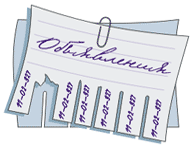Complete guide to accounting for inventory and best software choices
 Новости
Новости  12 ноября 2020, 15:39
12 ноября 2020, 15:39  glady
glady
Content

Later, he chooses to buy another 50 silver necklaces, but this time, the price has gone up to $30 per item. Opening inventory balance and ending inventory balance will need to be recorded on the balance sheet each period. Inventory overage occurs when there are more items on hand than your records indicate, and you have charged too much to the operating account through cost of goods sold. Inventory shortage occurs when there are fewer items on hand than your records indicate, and/or you have not charged enough to the operating account through cost of goods sold. After each physical inventory, adjust the general ledger inventory balance to the physical “actual” inventory balance. The objective of IAS 2 is to prescribe the accounting treatment for inventories.
Inventory represents a significant part of the balance sheet for many companies. In accounting for inventory determining and capturing the costs to be recognized as an asset through the inventory lifecycle is key, because it affects a company’s KPIs such as gross profit margin. Here we summarize what we see as the main differences on inventory accounting between the two standards. With the Cost of Sales accounting method, if you sell goods to a customer before receiving the purchase invoice that reflects the actual cost value, how do you calculate the cost of sale transaction?
Fundamental principle of IAS 2
There is no requirement to periodically adjust the retail inventory carrying amount to the amount determined under a cost formula. It will then appear on your Income Statement when the item is sold, giving more accurate profitability reports. You’ll still record the payment of wages at the time of the build, so your cash reporting will also be correct. Similarly, if you outsource your manufacturing, you’ll need to transfer the correct amount from the Income Statement “Manufacturing” code into your “Inventory / Assets” code. Even though the actual item shipped to the customer may not be the same physical item that was first delivered, the value assigned to it must be correct.
- Like if inventory is purchased for further processing, it’s debited in the raw mater account and transferred to the working in process account.
- Unlike IAS 2, US GAAP allows use of different cost formulas for inventory, despite having similar nature and use to the company.
- Later, he chooses to buy another 50 silver necklaces, but this time, the price has gone up to $30 per item.
- Further, the following entry will be passed if your business deals in merchandise to buy finished goods and resell them to the customer by adding profit margin.
- Similarly, when you make a sale, no accounting transactions are made since the asset has no value.
For example, a business could arrange to have its suppliers ship goods directly to its customers (known as drop shipping), so that it eliminates the need for finished goods inventory entirely. Another possibility is to use suppliers located close to the company’s production facility, in order to take advantage of smaller and more frequent deliveries that reduce the amount of raw materials on hand. A third possibility is to position work stations closer together, so that parts processed on one machine can be handed off to the next work station, rather than letting them pile up in between. And for businesses with complex production processes, inventory accounting can become much more involved and industry-specific. So if a company is manufacturing or selling an outdated item, it may see a decrease in the value of its inventory. If this isn’t accurately captured in the company’s financial statements, then the value of the company’s assets and the company itself may be inflated.
Accounting software
Whereas inventory management tracks and controls the movement of inventory, the accounting side deals with the financial information intimately tied to the buying and selling of finished goods. When it comes to inventory accounting, you’ll learn everything you need to know in this guide to inventory accounting. Inventory purchases are recorded as a charge (debit - D) in the sales operating account on an Inventory object code. The Inventory object code (asset) is used to record inventory value, reconcile inventory value after a physical inventory is performed, and transfer cost of goods sold to the inventory operating account. Unlike IAS 2, in our experience with the retail inventory method under US GAAP, markdowns are recorded as a direct reduction of the carrying amount of inventory and are permanent.
- Logan also runs a YouTube channel on which he publishes weekly videos about what everyday Americans need to know about taxes and tax relief.
- In such circumstances, IAS 2 requires the increase in value (i.e. the reversal), capped at the original cost, to be recognized.
- There are three main methods of inventory valuation that companies can choose to use to account for the value of their stock.
- As an example, you have a clock factory and make 50 clocks on a Monday, and the cost is $7 per unit.
- If you do handle consignment inventory, it raises the question of how to record the inventory in accounting.
Generally, units should have an inventory accounting system that tracks purchases and sales of the units’ inventory and allows units to calculate cost of goods sold, which must be transferred to the operating account. Inventory purchases are recorded on the operating account with an Inventory object code, and sales are recorded on the operating account with the appropriate sales object code. A cost-of-goods-sold transaction is used to transfer the cost of goods sold to the operating account. Both cost of goods sold and inventory valuation depend on accounting for inventory properly. A stock valuation should follow a full stock take to take into account any gift sales, free samples, damage or theft. Any loss of inventory due to damage or theft won’t be discovered until the count is done, and by that time it won’t be easy to determine where and when it happened.
Summary of IAS 2
A company may use either a periodic inventory system or perpetual inventory system to maintain its inventory records. A periodic system relies upon a physical count to determine the ending inventory balance, while a perpetual system uses constant updates of the inventory records to arrive at the same goal. The FIFO method is used for situations where the first units of your inventory are often the first ones sold. As an example, you have a clock factory and make 50 clocks on a Monday, and the cost is $7 per unit. The next day, you make 50 more clocks, though the cost goes down to just $6 each.
Further, the inventory cycle of the business contains three stages that include ordering, production, and finalization of the finished goods. In general, a lower period of inventory is more desirable from a profitability perspective. However, the operational perspective supports the availability of stock in significant quantity. Hence, the business needs to balance between operational and profitability perspectives. This phenomenon is shown in journal entries by debiting Work in process and crediting raw material.
It is also recorded as an asset, because it can be used to sell on to generate revenue. Inventory accounting will then allow you to assign values to the items in each of these three stages of the process. These assets are likely to be of future value to the company, so they need to be accurately accounted for and valued. The FIFO method, known as the first-in, first-out inventory management technique, tracks the value of goods as they enter and exit the inventory. This method concludes that the stock first purchased for inventory is also the first stock to be sold, even if it is physically not.
This can be seen most prominently in products that require exceptional time or expense in secondary stages of production. Items such as pharmaceuticals, machinery, and technology are three products that require large amounts of expense after their initial designing. When it comes to the end of a business’ accounting period, it is somewhat unlikely that the business has sold the entirety of its inventory. The GAAP rules also guard against company’s potentially overstating their value. Since inventory is an asset, it actually affects the overall valuation of the business. With this handy guide, you’ll be able to boost your profits and ensure a smooth and easy inventory accounting process.
You just need to create a sales order for the retailer and mark the inventory as allocated. This prevents it from selling to other customers and still shows as “in stock” for your accounting reports. When goods are sold, properly record the transactions and ensure that the correct items are billed and shipped to customers. Record sales in the sales operating account with the appropriate sales object code. Transfer the inventory cost of goods sold to the operating account using a cost of goods sold transaction.

 Меток нет
Меток нет
Похожие записи









